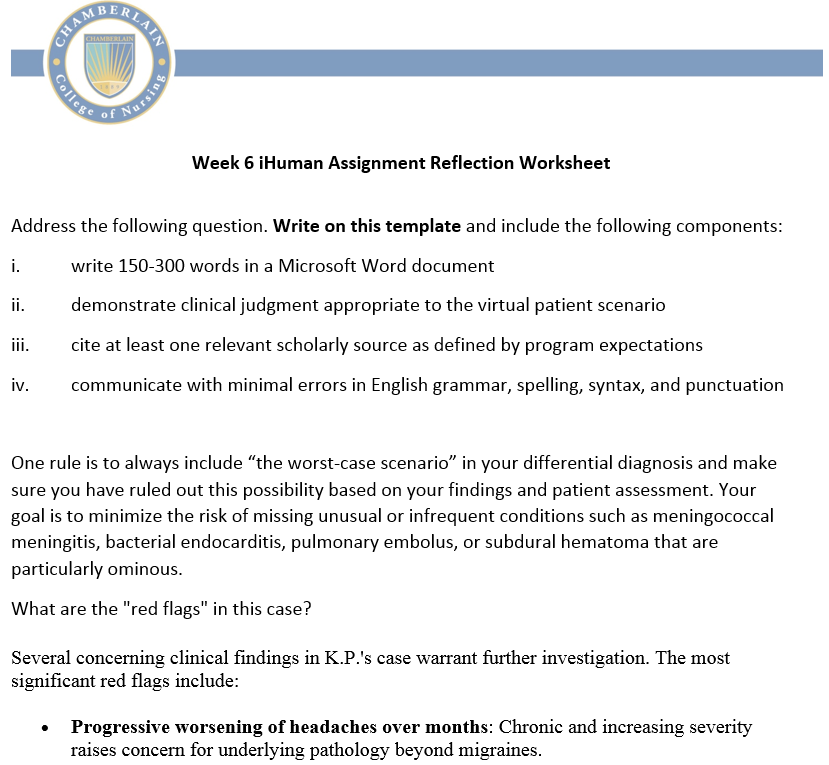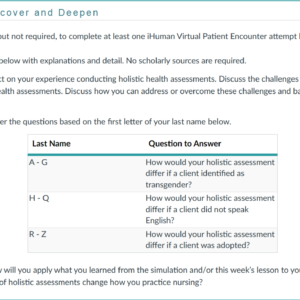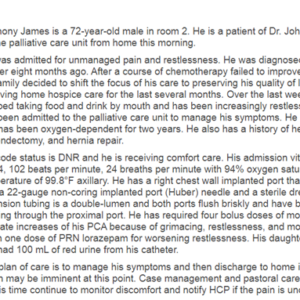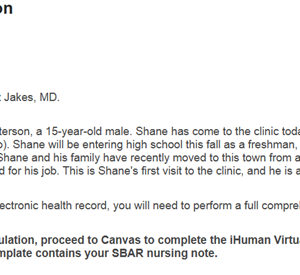NR509 Week 6: i-Human Virtual Patient Encounter Kathleen Parks
Reflection: Download this worksheet.
One rule is to always include “the worst-case scenario” in your differential diagnosis and make sure you have ruled out this possibility based on your findings and patient assessment. Your goal is to minimize the risk of missing unusual or infrequent conditions such as meningococcal meningitis, bacterial endocarditis, pulmonary embolus, or subdural hematoma that are particularly ominous.
Address the following question: What are the “red flags” in this case? Based on your pertinent key findings, what is “the worst-case scenario”? What lessons did you learn from this case that you can apply to your future professional practice? Include the following components:
-
- type 150-300 words in a Microsoft Word document
- demonstrate clinical judgment appropriate to the virtual patient scenario
- provide rationales for each intervention and cite at least one relevant scholarly source as defined by program expectations
- communicate with minimal errors in English grammar, spelling, syntax, and punctuation
SOLUTION
What are the “red flags” in this case?
Several concerning clinical findings in Kathleen Park’s case warrant further investigation. The most significant red flags include:
- Progressive worsening of headaches over months: Chronic and increasing severity raises concern for underlying pathology beyond migraines.
- Headache location (unilateral, behind the eye) with throbbing pain: This pattern can be seen in migraines but also raises suspicion for vascular disorders, such as a cerebral aneurysm or subarachnoid hemorrhage.
- Intensity of pain (8-10/10): While migraines can be severe, high-intensity pain should not be dismissed without ruling out life-threatening conditions.
- Associated symptoms (nausea, vomiting, photophobia): These are classic migraine………………………..purchase solution at $10 only





Reviews
There are no reviews yet.